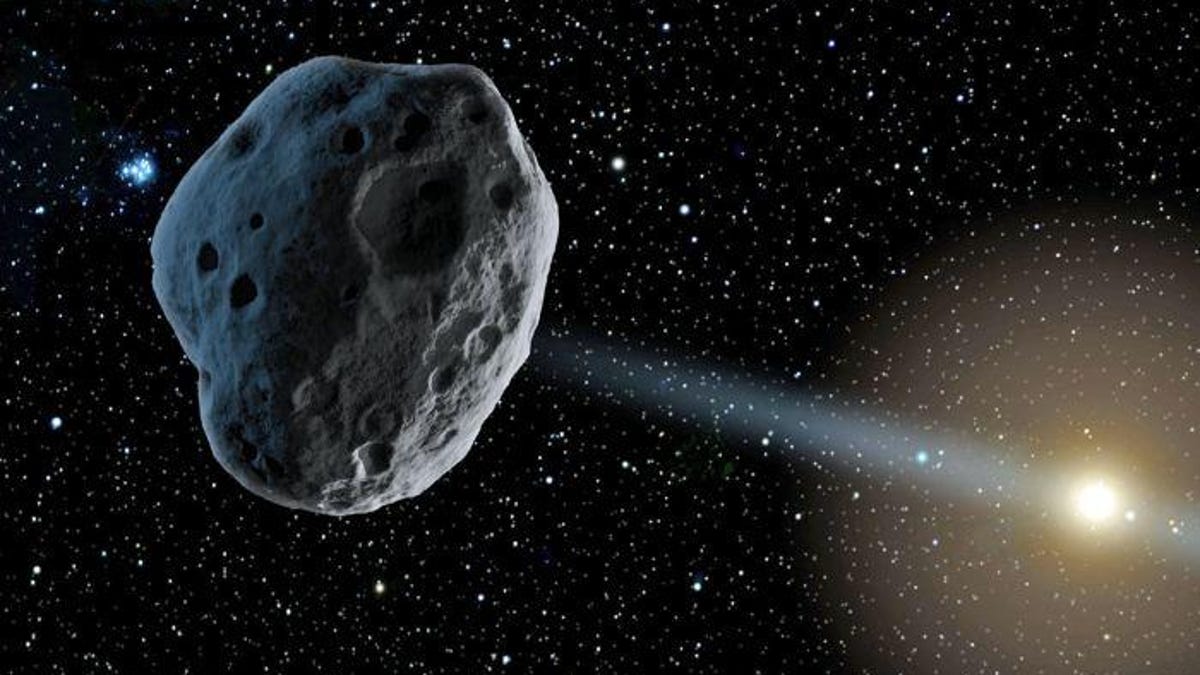A closer look at the first 'alien' asteroid to pay us a visit
What could be the first interstellar object ever seen dropped by and then sped back to deep space. Scientists rushed to study it as it passed.

It may be the most important asteroid spotted yet, and it's already gone.
It's really rare that we get any visitors from outside the solar system. In fact, astronomers believe they only spotted one for the first time earlier this month when an object that's probably an asteroid whipped by us.
The previously unknown space rock, currently designated A/2017 U1, dropped into our solar system from above the flattish ecliptic plane where most planets, asteroids and comets native to our system rotate around the sun. It then slingshotted around our star and back out to deep space, but not before scientists got a better look at the visitor.
A/2017 U1 is an unidentified interstellar object passing through the Solar System. It was discovered on October 19, 2017. pic.twitter.com/FTTJpfruTo
— Antonio Paris (@AntonioParis) October 30, 2017
By looking at the asteroid's trajectory, scientists have determined that A/2017 U1 likely came from the direction of the star Vega and the constellation Lyra. It began a close approach to the sun in September, then swung around the star and passed within 15 million miles of Earth on Oct. 14. Problem is, it wasn't spotted until Oct. 18, when it was already heading away from us.
Still, telescopes and astronomers swung into action to observe the retreating visitor. The Liverpool Telescope in the Canary Islands managed to capture this cool sequence last week of the vagabond minor planet:
What's possibly the first visitor from beyond the grasp of the sun's gravity, captured in one glorious GIF.
The alien asteroid is interesting not just because of its potentially interstellar origin, but also because of its speed -- it was seen rocketing by us at 15.8 miles (25.5 kilometers) per second. It also turns out to be a little more colorful than the drab gray rocks we tend to picture when we think of asteroids. In fact, NASA astronomer Joseph Masiero says A/2017 U1 is actually red.
The data that scientists were able to grab isn't great and the margin for error is significant, but Masiero wrote up his findings in a brief paper (PDF) showing that the asteroid looks to be largely featureless and red like many objects from the Kuiper Belt beyond Neptune.
It may be hard to get much more data on the itinerant asteroid that paid us such a brief but significant visit. Still, it seems worthy of a better name than just A/2017 U1. I suggest "Red Rama" after its apparent hue and the series of Arthur C. Clarke "Rama" novels that pretty accurately described its journey. (Disclosure: This is not a completely original suggestion. See below.)
Perhaps @IAU_org should name A/2017 U1 "Rama" - Sir Arthur C. Clarke certainly described it rather well - in 1973 #Interstellar #astronomy pic.twitter.com/EeLiG7m5GW
— NASA Watch (@NASAWatch) October 28, 2017
Crowd Control: A crowdsourced science fiction novel written by CNET readers.
Solving for XX: The tech industry seeks to overcome outdated ideas about "women in tech."

